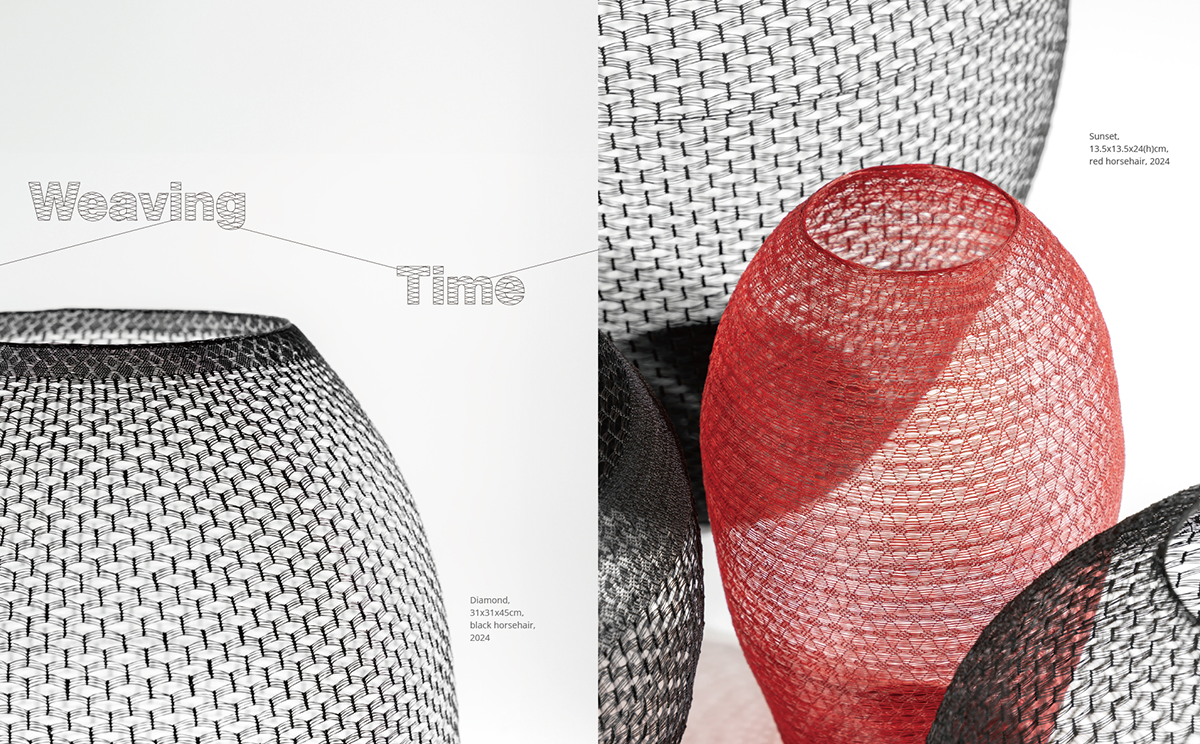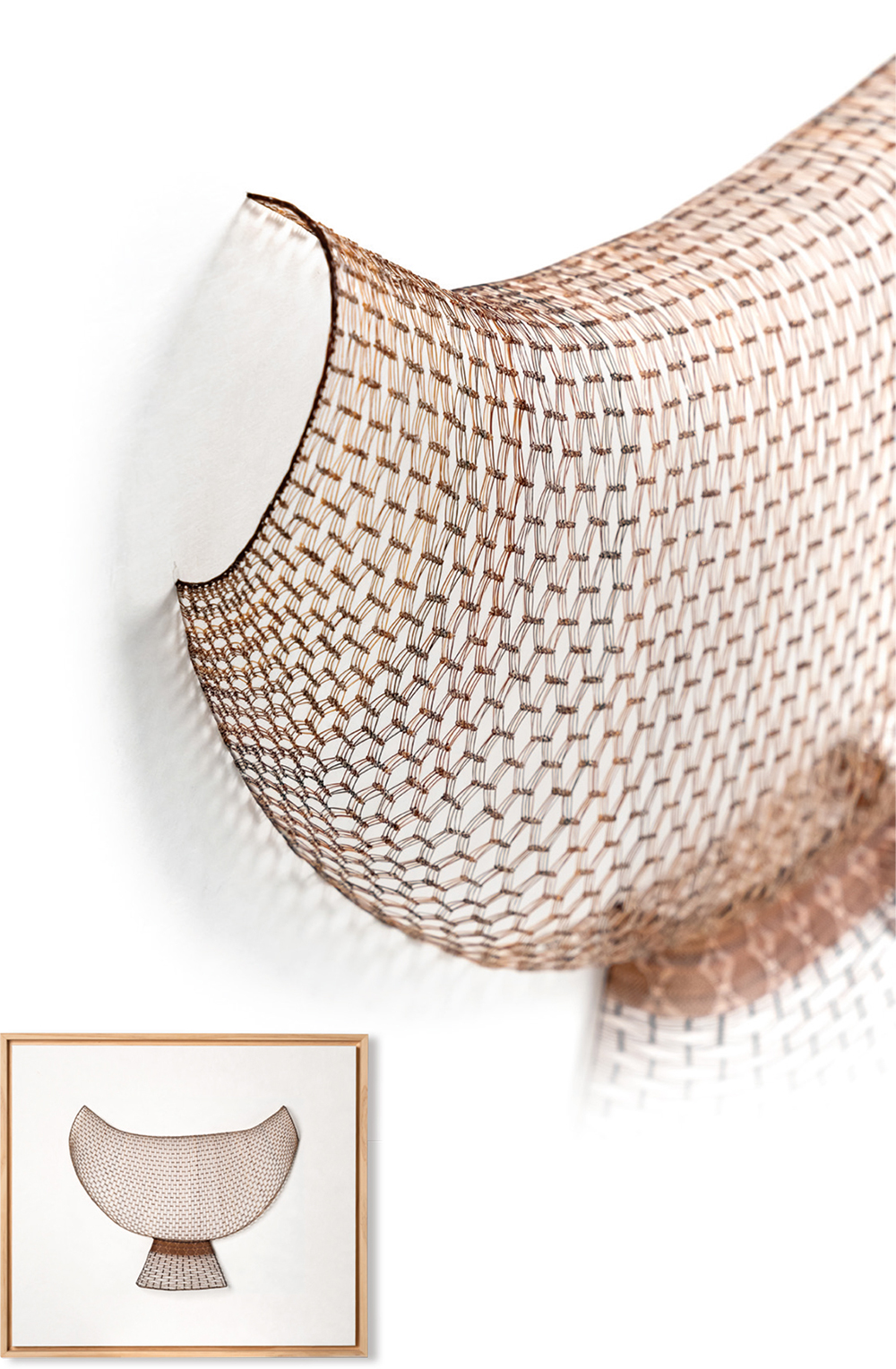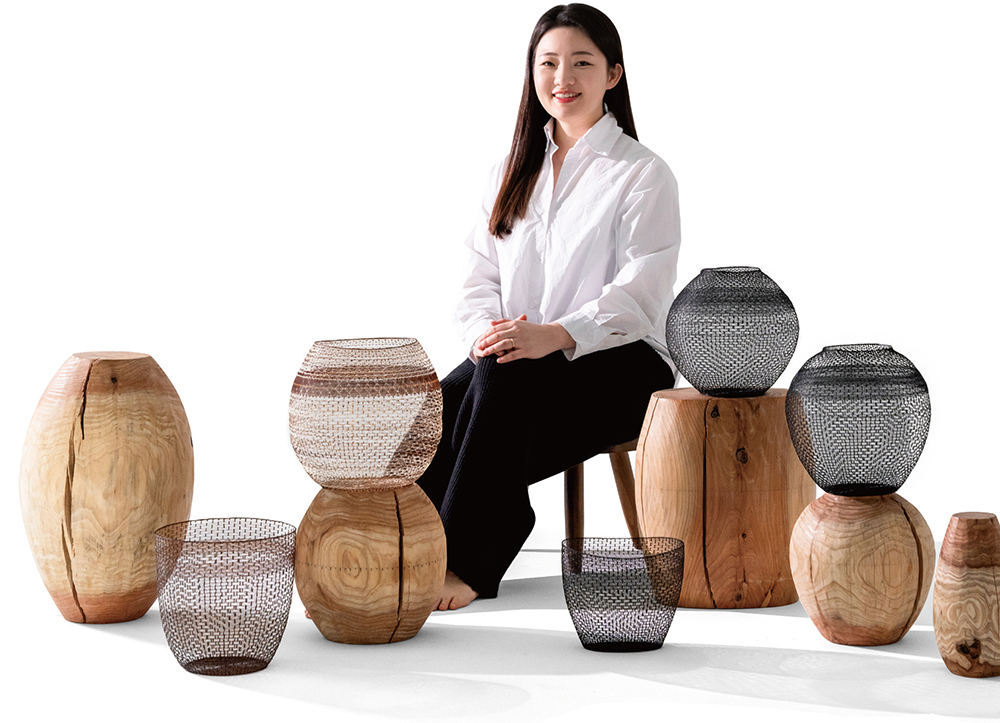
Art+Future
- Writer.Sung Ji Yeon
- Photos courtesy of.Soluna Craft
Sometimes, things fading away shine brightly once more―this happens when someone recognizes their value and breathes new life into them. Such is the relationship between artist Jeong Dahye and horsehair crafts. Jeong has revitalized the disappearing horsehair craft of Jeju Island in her unique style. Her works weave together the long history of the past with the artist’s present―crafted with meticulous touch and dedication―connecting her tomorrow with our yesterday.
Jeong Dahye
Q. How did you come across horsehair?
I majored in sculpture in college―seeking expertise by learning about other fields―I studied traditional textiles in graduate school. I encountered horsehair when I learned about crafts from Jeju Island and participated in a project using materials from Jeju.
It was a stroke of luck while contemplating a topic for my graduation thesis―since there wasn’t much research on horsehair, I started studying it. Working in the school’s product development lab, I made items using horsehair. When they all sold out, I decided to commit to horsehair crafts fully―I felt something shaping inside me through horsehair, leading me to pursue it as my career naturally.
Q. What types of works have you created?
I used to make everyday items like mobiles. Recently, I’ve been creating pottery-shaped works, which fall into three main categories: open-top shapes, slightly covered round jars and forms attached to flat surfaces like relief sculptures.
Q. Can you describe your working process?
First, I select the best horsehair and choose strands of uniform color. If making a brown piece, I select only brown horsehair. If I use other colors, I dye the horsehair accordingly. To weave the desired shape, I carve a wooden mold and wrap the horsehair around it, creating small loops with a needle and adjusting the spacing to form patterns. After shaping it, I separate it from the wooden frame and fix the shape with heat treatment. Though it’s hard to say exactly how long each piece takes, it typically takes over a month to complete one.
Q. What do you like about horsehair?
I’ve always liked creating three-dimensional works, which is why I chose sculpture over painting. When studying traditional textiles, I felt something was missing. Horsehair filled that void by becoming three-dimensional as soon as it’s woven. Its characteristic of forming a three-dimensional piece immediately as each strand is woven was very appealing.

Crescent Moon, 67.5x59.5x7(d)cm, brown horsehair, 2023
Q. Have you consciously incorporated or differentiated from tradition in your work?
I use traditional techniques, embracing tradition. However, I’ve created three-dimensional pieces that are not seen in traditional relics, which differentiates my work from tradition. This wasn’t intentional, though. It began with the natural question of whether I could make a living from this work. With many horsehair artisans already out there and no assurance that I could surpass them in making horsehair products, I centered on the idea of “creating three-dimensional works using the three-dimensionality of horsehair.” Since the techniques were already established, I opted to explore different forms instead of traditional items, resulting in a variety of works.
Q. The variety in your patterns also sets your work apart from typical horsehair crafts.
Historically, horsehair patterns were diverse, but many horsehair crafts were lost during wars. By the late Joseon period, almost all horsehair products were plain without patterns, leaving very few traditional horsehair patterns. I’ve actively used the few patterns available, but there were limitations. Thus, I sometimes create patterns by referencing other artifacts. Recently, I got inspiration from pottery adorned with animal decorations like turtles, made to wish for the deceased’s well-being in the afterlife.
Q. What is the most important mindset you maintain while working?
Striving to do better than my past self, I consider my work and myself inseperable because my time and thoughts are all embedded in my pieces. To me, improving my work means improving myself. Therefore, I hope to create works that are more impressive than my previous ones by analyzing techniques and attempting new approaches based on that analysis. If I initially set the spacing between horsehair strands to 1cm, I might try narrowing the gaps gradually to achieve the desired shape or attempt to create challenging forms. In short, I challenge my own limits.
Q. Is there anything new you want to try?
I want to create larger works. The impact of size can’t be ignored, so I want to make larger pieces to leave a stronger impression. However, techniques and training methods for making large pieces differ from those for smaller ones. To create larger works in my current situation, I might need to use other materials. There are evident constraints to working exclusively with horsehair. Still, I want to explore as much as possible with horsehair alone, considering ways to expand the size of my works while using other materials as minimally as possible.
Q. What are your future exhibition plans?
I have an exhibition scheduled at the Suzhou Wu Culture Museum in China from September to November. After that, I will continue to exhibit at the Korean Cultural Center in Shanghai until December. In Korea, I plan to participate in the domestic trend fair in December. My works can also be seen anytime at Soluna Craft near Gyeongbokgung Palace






